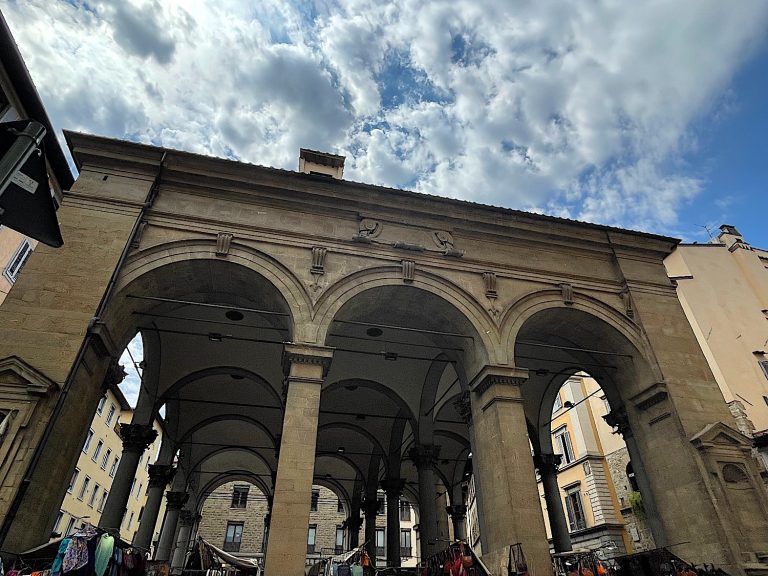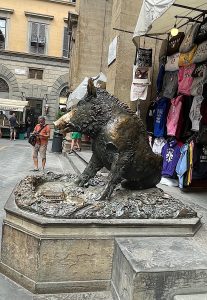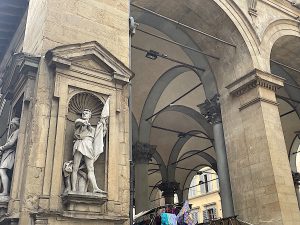
Age
1547-1551
Designers
Giovanni Battista Del Tasso, Bernardo Buontalenti, Paolo Veraci, Claudio Cestelli, Carlo Francini
The loggia, located in the homonymous square, was built at the behest of Grand Duke Cosimo I de’ Medici and was to serve mainly as a covered area where to sell silks and precious objects. The initial project was by Giovanni Battista del Tasso but later Bernardo Buontalenti intervened and replaced the original corner columns with four reinforcement pillars to fit eight niches in which to place marble statues. One of the pillars was used to obtain a spiral staircase that allowed access to a room above where notaries were kept. In the past, the loggia was embellished with a clock with a putto made by Andrea del Verrocchio and the fountain of the little pig by Pietro Tacca. The loggia was restored in 1838 to a design by the architect Paolo Veraci; the next intervention was to place in the niches the statues of eight famous Florentines but only the three current statues, depicting Bernardo Cennini Giovanni Villani and Michele di Lando, were made. Various other interventions followed one another over time; in the period 1928-1931 the access steps were restored, the bases of columns and pillars, the mouldings of capitals and cornices were renewed and the roofing and the gutters were renovated; in 1964-1965 the pavement was completely redone and the central marble wheel was restored; this wheel marks the place where in the Middle Ages the cart stood before the battles and where dishonest merchants were pilloried; the loggia and the statues were restored in the period 1996-2003 (design by Claudio Cestelli and Carlo Francini). Currently on one side of the loggia there is a bronze copy of the fountain of the boar by Pietro Tacca (1633); the original of the statue, known as the Porcellino, is kept at the Bardini Museum. The latter is, in turn, a copy of the original in marble marble that is now located in the Uffizi Gallery. A 2005 plaque, placed on a pillar, recalls how the inspiration for Andersen’s fairy tale “The Little Pig” was born here. Currently, the loggia is used for the sale of Florentine handicrafts.
The external loggia is made of Pietraforte Sandstone, the internal arches are plastered, while the columns that support them are in Pietra Serena Sandstone. The statues housed in the corners of the loggia are in Apuan Marble.


